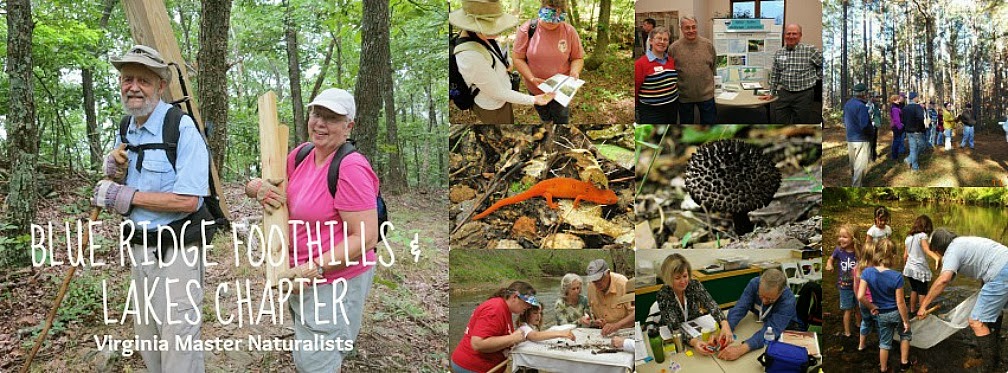 |
| Blue Ridge Foothills and Lakes Chapter is involved in water quality testing for SOS |
Over the years, the Smith Mountain Lake Association has
joined forces in a collaborative effort with the Virginia Save Our Streams
Program and the Blue Ridge Foothills and Lakes Chapter of the Virginia Master
Naturalist to increase the number of certified volunteer Save Our Streams
monitors checking the health of streams entering Smith Mountain Lake. As we continue to hear and read about
environmental pollution, data from the Save Our Streams Program serves as
important indicator of the health of our streams both locally and throughout
the Commonwealth.
Although Smith Mountain Lake is considered to be in great
condition, we frequently hear about problems related to increasing sediment
entering the lake, especially at the upper ends of the Roanoke and Blackwater
channels of the lake, within coves and other streams entering the lake. One just has to look at the river bed under
the bridge on Route 834 crossing the Blackwater and reflect back to when people
were able to water ski under the bridge.
Sediment/silt from erosion up river has made its way down the many miles
from the headwaters. Similar scenarios
can be seen upstream on the Roanoke.
With the sediment comes phosphorus and other chemicals that
can have a negative impact on the health of Smith Mountain Lake. Recent efforts have been underway to make
people aware of buffer landscaping and the importance of using silt fences to help
keep sediment and chemicals out of the lake.
The potential positive impact of buffers along the rivers and streams is
enormous. But, where does the Save Our
Streams program fit in?
The Virginia Save Our Streams is designed to give an
indication of the health of a stream at a given point in time. Local streams are monitored by certified
volunteers who monitor quarterly every year.
Data from this monitoring is extremely valuable in looking at health
trends in our streams. By identifying
and counting the benthic macroinvertebrates (those aquatic “bugs” without backbones
that can be seen with the naked eye) living in the stream, we are able to make
a judgment about the streams health and the potential impact of water entering
Smith Mountain Lake. Without the use of
silt fences and areas with vegetation next to the stream, we have seen where
land development upstream may increase the amount of sediment in a portion of a
stream. This sediment actually can
smoother these tiny “bugs” (such as mayflies and stoneflies) living under rocks
in riffles in the stream. We have seen
areas where increased sediment has resulted in unacceptable scores using
metrics developed out of Virginia Tech.
Some streams never recover; others may improve over time if no further
development occurs.
The results of our monitoring and of others around the
Commonwealth are sent to the Virginia Department of Environmental Quality for
further analysis and possible action.
Currently, we have about 30 certified Save Our Streams monitors checking
19 different streams sites that lead into Smith Mountain Lake. We have many more sites that need to be
monitored.
If you are interested in learning more about
the Virginia Save Our Streams program or becoming a monitor, the next Orientation
Session has been set up for Friday, April 20th from 9 am to
noon at the Smith Mountain Lake Office.
Please contact De English for further information about this session at dmenglish@hughes.net or call the SMLA office on 540-719-1690 to
register for this session.
Learn more about the Virginia Master Naturalist program here.
*Article and info by De English

No comments:
Post a Comment
Thanks for your comment and interest! NOW GO OUTSIDE!